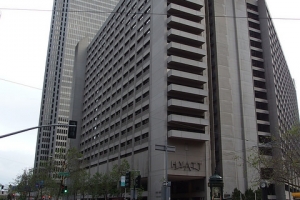Support migrant centric journalism today and donate

The U.S. Department of Labor released its analysis for jobs growth in the United States and unemployment for June. The news is mixed, but generally does not change significantly from the past several months. Persons seeking work in the U.S. will find that, at least at this time, the U.S. economy is stable, if somewhat anemic.
Unemployment remains at the same 4.6%, after declining steadily for several months. This, after remaining at 5% with small fluctuations for the second half of 2005. 7 million people capable of working do not have jobs in the United States, according to the U.S. government monthly survey. Long-term unemployment fell slightly to 1.1 million.
Long-term unemployment is defined as persons eligible for and seeking work that have been out of work for longer than 27 weeks. This accounts for 16.2% of the total unemployment figure, down from 18.8% in May.
121,000 jobs were added in June, indicating that the economy continues to slow under the combined weight of high energy prices and rising interest rates. April and May also had very slow growth, averaging 108,000, down very significantly from the same period in 2005. The federal government has increased the federal interest rate 17 times since 2004 (it is now 5.25%, with rumors of another increase soon), resulting in increased debt upon people who have borrowed money on credit cars or for homes, etc. Oil continues to sell at approximately $76 USD per barrel, keeping energy prices at levels that Americans are not used to.
Economists say at least 150,000 new jobs are needed each month just to keep pace with the natural growth of the work force. Forecasters had predicted a figure closer to 175,000 for June, or even higher. For comparison, consider that the population of the U.S. will surpass 300 million in October, adding about 2.7 million people per year by birth or immigration.
With unemployment at 4.6%, the good news for workers is that they have a stronger position to negotiate higher wages. In the larger economic picture, this could also lead to increased inflation. Consumer prices rose at an uncomfortable rate of around 4.1% in the 12 months previous to June, surpassing the purchasing power of wage increases by strong margin.
Hourly wages rose at their fastest rate in five years, jumping an average of $0.08/hour between May and June. In the U.S., wages are reported as pre-tax; most people pay ~33% of their wages in tax between the federal, state and city governments.
While hourly wages increased, the overall payroll rate including salaried positions barely grew, a strong indicator. The increases in wages since the recession in 2001 are seen as catching up to inflation in this period rather than actually increasing the purchasing power of workers.
The index of the online job search firm Monster.com, considered a solid indicator of job growth, based on its help-wanted postings, recorded an increase in June, driven by demand for white-collar workers. Some skilled occupations, like accounting, auditing, information technology, health care and transportation, appeared to be facing worker shortages. Their index showed growth in 18 of the 23 occupational categories used by the government and declined in only two.
Related:
• US population to hit 300 million in October, 2006
• US immigration issues final rule for green card Affidavit of Support
• US Senate blocks minimum wage increase
• US Software CEO wants more skilled workers
• E2 business visa a popular entry option for US
• New employment opportunities for immigrants in US
• US resorts rely on foreign short-term workers
• The US tops UN study on global immigration





















